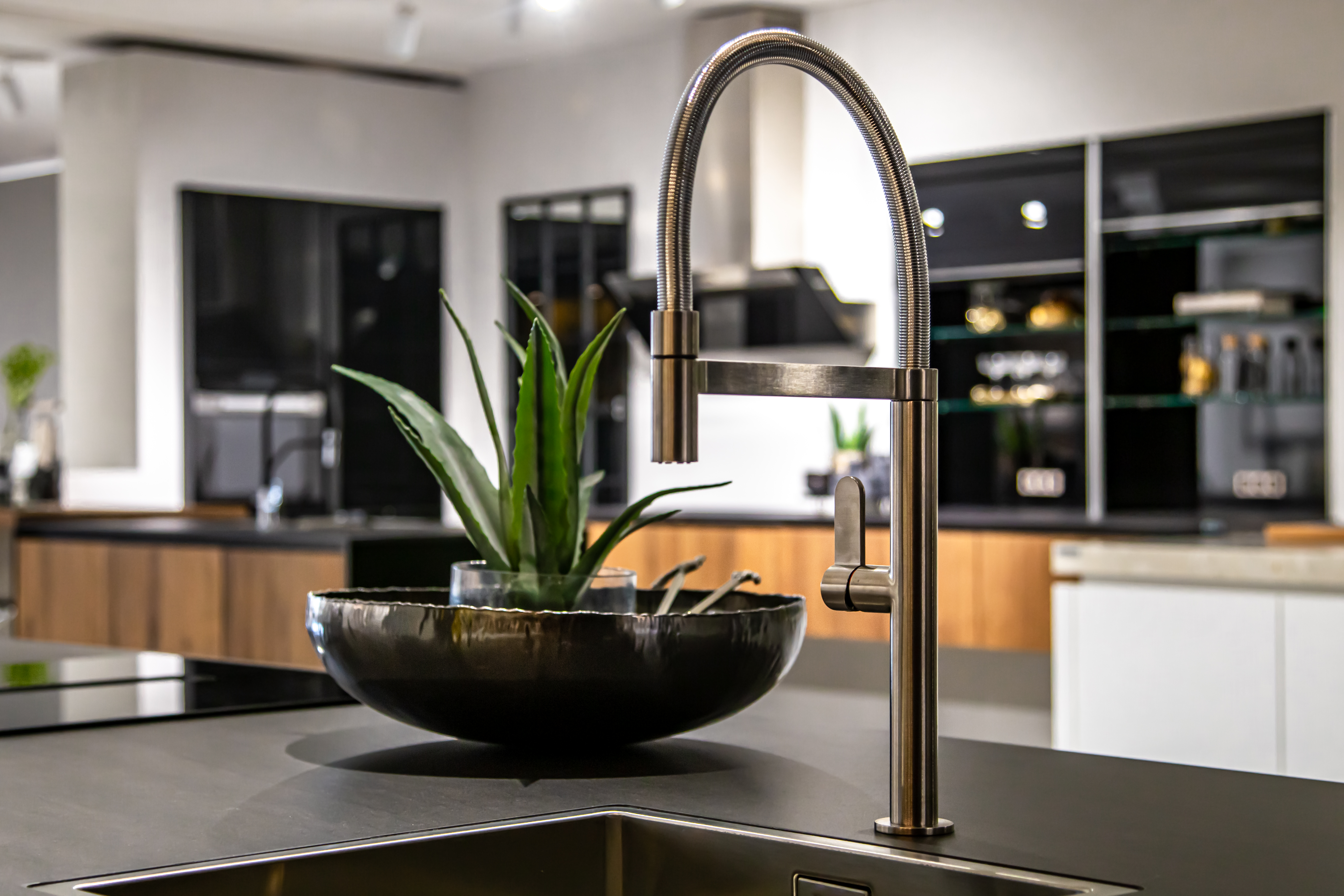
When it comes to plumbing, the importance of selecting the right valves cannot be overstated. From controlling water flow to ensuring system efficiency, different types of valves play crucial roles in maintaining your plumbing system. In this guide, we’ll explore various types of valves, including ball valves, check valves, and pressure reducing valves, to help you make informed decisions for your home or business.
Understanding Different Types of Plumbing Valves
1. Ball Valves
What Are Ball Valves?
Ball valves are a popular choice for plumbing systems due to their simplicity and reliability. They feature a spherical disc (the "ball") with a hole through the middle. When the ball is rotated, the hole aligns with the pipe, allowing water to flow through. When the ball is turned 90 degrees, the hole is perpendicular to the pipe, stopping the flow.
Benefits:
Durability: High-quality ball valves are designed to last and can withstand high pressure and temperature.
Ease of Use: They offer straightforward on/off control with a simple turn of the handle.
Low Maintenance: Ball valves are less prone to leaks and require minimal maintenance.
Applications:
Ball valves are suitable for various applications, including controlling water flow in residential and commercial plumbing systems. They are ideal for main water lines and shut-off valves.
2. Check Valves
What Are Check Valves?
Check valves are designed to prevent backflow in a plumbing system. They allow water to flow in one direction while blocking reverse flow, which can cause contamination or damage to the system.
Types of Check Valves:
Vertical Check Valves: These are installed in vertical piping and are used in systems where the flow direction needs to be controlled. They are commonly used in pump discharge lines.
Swing Check Valves: These have a disc that swings open or closed to allow or block flow. They are often used in larger pipelines.
Benefits:
Prevent Backflow: They protect against reverse flow that can contaminate the water supply.
Maintenance-Free: Properly installed check valves require minimal maintenance and are self-operating.
Applications:
Check valves are essential in systems where backflow could cause issues, such as in water supply lines and heating systems.
3. Pressure Reducing Valves
What Are Pressure Reducing Valves?
Pressure reducing valves (PRVs) are used to lower and regulate the water pressure in a plumbing system. They ensure that the pressure remains consistent, preventing damage to pipes and fixtures.
Benefits:
Protects Plumbing System: By maintaining optimal pressure, PRVs prevent damage to pipes, faucets, and appliances.
Improves Efficiency: Consistent pressure improves the efficiency of your plumbing system and reduces water waste.
Applications:
PRVs are commonly used in both residential and commercial plumbing systems, especially in areas with high water pressure.
4. Line Strainers
What Are Line Strainers?
Line strainers, also known as filter strainers, are used to remove debris and particles from the water before it enters the plumbing system. They help protect valves and other components from damage.
Benefits:
Prevents Clogs: Line strainers capture debris and prevent clogs in pipes and fixtures.
Prolongs Equipment Life: By filtering out particles, they help extend the life of other plumbing components.
Applications:
Line strainers are used in various systems, including irrigation, industrial, and residential plumbing, where debris removal is crucial.
5. Bathroom Valves
What Are Bathroom Valves?
Bathroom valves are specific to bathroom fixtures and include options like shower valves and sink faucets. They control the flow and temperature of water in bathroom installations.
Benefits:
Precision Control: Bathroom valves offer precise control over water flow and temperature.
Variety: They come in various styles and finishes to match bathroom decor.
Applications:
Bathroom valves are essential for managing water flow and temperature in showers, sinks, and other bathroom fixtures.
6. Water Control Valves
What Are Water Control Valves?
Water control valves regulate the flow of water in a plumbing system. They can include various types, such as ball valves and gate valves, used to control water supply and distribution.
Benefits:
Regulates Flow: Water control valves manage the flow and distribution of water throughout the system.
Versatility: They are used in various applications, including residential, commercial, and industrial systems.
Applications:
Water control valves are used in almost every plumbing system, including irrigation, water supply, and industrial processes.
7. Valves for Faucets
What Are Valves for Faucets?
Valves for faucets control the water flow to your sink or faucet. They include options like compression valves and ceramic disk valves, each offering different benefits.
Benefits:
Control Flow: These valves allow precise control over the water flow and temperature at the faucet.
Variety of Designs: They come in different designs to fit various faucet types.
Applications:
Valves for faucets are used in kitchen sinks, bathroom sinks, and other fixtures where precise water control is needed.
Choosing High-Quality Valves
When selecting valves for your plumbing system, consider the following factors to ensure you choose high-quality valves:
1. Material
High-quality valves are made from durable materials such as brass, stainless steel, or bronze. These materials resist corrosion and ensure longevity.
2. Compatibility
Ensure the valve you choose is compatible with your existing plumbing system. Check the size, connection type, and pressure ratings.
3. Brand Reputation
Opt for valves from reputable brands known for their quality and reliability. Investing in well-known brands can ensure better performance and durability.
4. Maintenance Needs
Consider the maintenance requirements of the valve. Some valves, like ball valves, require minimal upkeep, while others might need regular inspection and maintenance.
5. Cost vs. Value
While it might be tempting to go for the cheapest option, consider the long-term value. High-quality valves might have a higher upfront cost but can save you money over time with reduced maintenance and fewer replacements.
Choosing the right valves for your plumbing system is crucial for maintaining efficiency, safety, and durability. Whether you need ball valves, check valves, or pressure reducing valves, understanding their functions and benefits can help you make informed decisions. By selecting high-quality valves and considering factors such as material and compatibility, you can ensure that your plumbing system operates smoothly and efficiently.
When it comes to plumbing, the importance of selecting the right valves cannot be overstated. From controlling water flow to ensuring system efficiency, different types of valves play crucial roles in maintaining your plumbing system. In this guide, we’ll explore various types of valves, including ball valves, check valves, and pressure reducing valves, to help you make informed decisions for your home or business.
Understanding Different Types of Plumbing Valves
1. Ball Valves
What Are Ball Valves?
Ball valves are a popular choice for plumbing systems due to their simplicity and reliability. They feature a spherical disc (the "ball") with a hole through the middle. When the ball is rotated, the hole aligns with the pipe, allowing water to flow through. When the ball is turned 90 degrees, the hole is perpendicular to the pipe, stopping the flow.
Benefits:
Durability: High-quality ball valves are designed to last and can withstand high pressure and temperature.
Ease of Use: They offer straightforward on/off control with a simple turn of the handle.
Low Maintenance: Ball valves are less prone to leaks and require minimal maintenance.
Applications:
Ball valves are suitable for various applications, including controlling water flow in residential and commercial plumbing systems. They are ideal for main water lines and shut-off valves.
2. Check Valves
What Are Check Valves?
Check valves are designed to prevent backflow in a plumbing system. They allow water to flow in one direction while blocking reverse flow, which can cause contamination or damage to the system.
Types of Check Valves:
Vertical Check Valves: These are installed in vertical piping and are used in systems where the flow direction needs to be controlled. They are commonly used in pump discharge lines.
Swing Check Valves: These have a disc that swings open or closed to allow or block flow. They are often used in larger pipelines.
Benefits:
Prevent Backflow: They protect against reverse flow that can contaminate the water supply.
Maintenance-Free: Properly installed check valves require minimal maintenance and are self-operating.
Applications:
Check valves are essential in systems where backflow could cause issues, such as in water supply lines and heating systems.
3. Pressure Reducing Valves
What Are Pressure Reducing Valves?
Pressure reducing valves (PRVs) are used to lower and regulate the water pressure in a plumbing system. They ensure that the pressure remains consistent, preventing damage to pipes and fixtures.
Benefits:
Protects Plumbing System: By maintaining optimal pressure, PRVs prevent damage to pipes, faucets, and appliances.
Improves Efficiency: Consistent pressure improves the efficiency of your plumbing system and reduces water waste.
Applications:
PRVs are commonly used in both residential and commercial plumbing systems, especially in areas with high water pressure.
4. Line Strainers
What Are Line Strainers?
Line strainers, also known as filter strainers, are used to remove debris and particles from the water before it enters the plumbing system. They help protect valves and other components from damage.
Benefits:
Prevents Clogs: Line strainers capture debris and prevent clogs in pipes and fixtures.
Prolongs Equipment Life: By filtering out particles, they help extend the life of other plumbing components.
Applications:
Line strainers are used in various systems, including irrigation, industrial, and residential plumbing, where debris removal is crucial.
5. Bathroom Valves
What Are Bathroom Valves?
Bathroom valves are specific to bathroom fixtures and include options like shower valves and sink faucets. They control the flow and temperature of water in bathroom installations.
Benefits:
Precision Control: Bathroom valves offer precise control over water flow and temperature.
Variety: They come in various styles and finishes to match bathroom decor.
Applications:
Bathroom valves are essential for managing water flow and temperature in showers, sinks, and other bathroom fixtures.
6. Water Control Valves
What Are Water Control Valves?
Water control valves regulate the flow of water in a plumbing system. They can include various types, such as ball valves and gate valves, used to control water supply and distribution.
Benefits:
Regulates Flow: Water control valves manage the flow and distribution of water throughout the system.
Versatility: They are used in various applications, including residential, commercial, and industrial systems.
Applications:
Water control valves are used in almost every plumbing system, including irrigation, water supply, and industrial processes.
7. Valves for Faucets
What Are Valves for Faucets?
Valves for faucets control the water flow to your sink or faucet. They include options like compression valves and ceramic disk valves, each offering different benefits.
Benefits:
Control Flow: These valves allow precise control over the water flow and temperature at the faucet.
Variety of Designs: They come in different designs to fit various faucet types.
Applications:
Valves for faucets are used in kitchen sinks, bathroom sinks, and other fixtures where precise water control is needed.
Choosing High-Quality Valves
When selecting valves for your plumbing system, consider the following factors to ensure you choose high-quality valves:
1. Material
High-quality valves are made from durable materials such as brass, stainless steel, or bronze. These materials resist corrosion and ensure longevity.
2. Compatibility
Ensure the valve you choose is compatible with your existing plumbing system. Check the size, connection type, and pressure ratings.
3. Brand Reputation
Opt for valves from reputable brands known for their quality and reliability. Investing in well-known brands can ensure better performance and durability.
4. Maintenance Needs
Consider the maintenance requirements of the valve. Some valves, like ball valves, require minimal upkeep, while others might need regular inspection and maintenance.
5. Cost vs. Value
While it might be tempting to go for the cheapest option, consider the long-term value. High-quality valves might have a higher upfront cost but can save you money over time with reduced maintenance and fewer replacements.
Choosing the right valves for your plumbing system is crucial for maintaining efficiency, safety, and durability. Whether you need ball valves, check valves, or pressure reducing valves, understanding their functions and benefits can help you make informed decisions. By selecting high-quality valves and considering factors such as material and compatibility, you can ensure that your plumbing system operates smoothly and efficiently.

Product In Your Cart.
